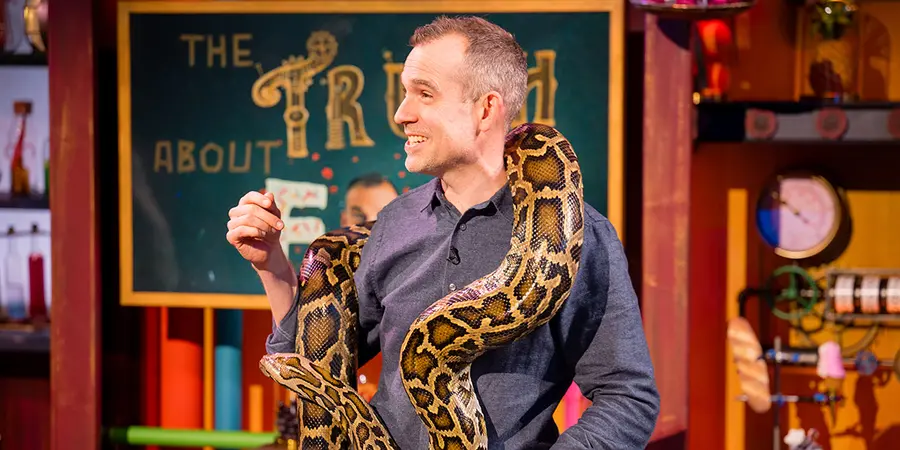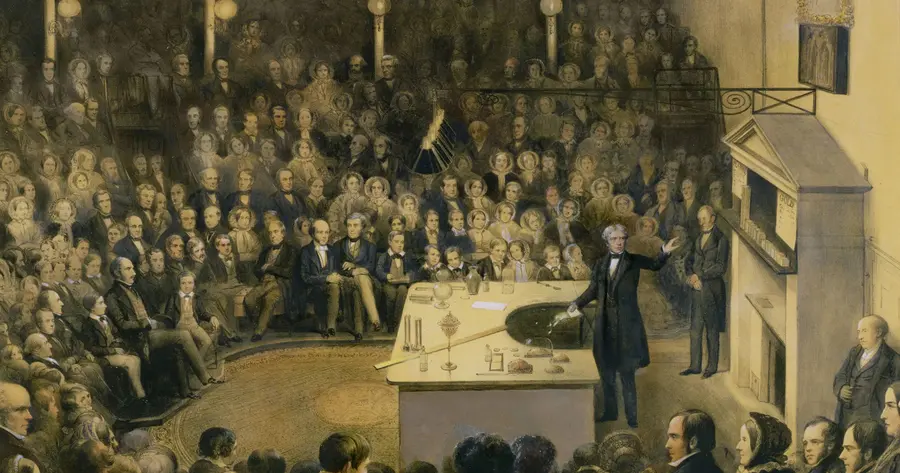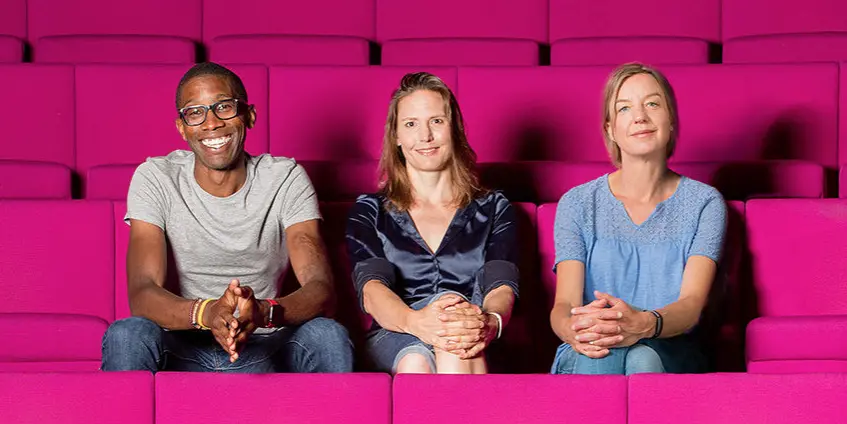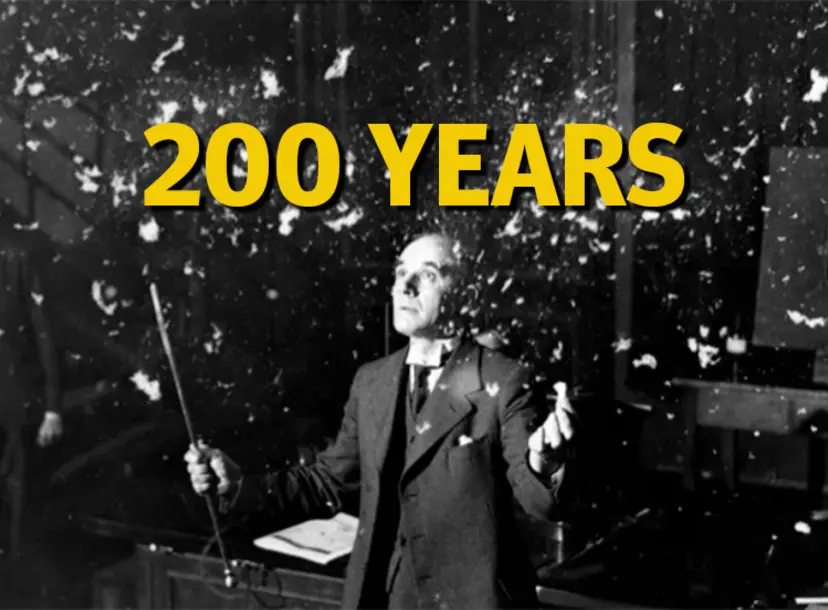In 2025, the Royal Institution’s CHRISTMAS LECTURES will celebrate their 200th anniversary. For two centuries, these iconic lectures have captivated children (and adults) with science brought to life through exciting demonstrations. But what led to their creation, and how have they stood the test of time?

Lectures for a Juvenile Auditory
In the early 19th century, science lectures specifically designed for a “juvenile auditory” — young people’s ears — were rare. While children occasionally attended lectures at the Royal Institution, there was no dedicated programme for them. That changed in 1825, when the Managers decided to offer a lecture series tailored to them. The earliest advertisements promoting the lectures were published in newspapers such as The Times and The Morning Herald.
Contrary to popular belief, Faraday did not deliver the inaugural series. Citing his busy schedule, he initially passed the task to professional lecturers such as John Millington and John Wallis, who presented courses on natural philosophy and astronomy during the 1825–26 and 1826–27 seasons. These were no small undertakings — Millington’s series, for instance, comprised 22 lectures, with 15 held over the Christmas holiday and the remainder scheduled at Easter. Though details of the content are sparse, records suggest these early lectures incorporated large, striking visuals to engage their young audience.
Faraday, Fame and The Candle
It was Michael Faraday who propelled the CHRISTMAS LECTURES to prominence. After being persuaded to give his first series on chemistry in 1827, he delivered 19 series between 1827 and 1860. Under Faraday, the lecture series became shorter, typically around six lectures, and occurred only over the Christmas holidays.
Faraday also truly cemented the tradition of demonstrations being at the heart of these lectures. His most famous series, The Chemical History of a Candle, used the simple flame of a candle to explore a myriad of physical and chemical processes. Through this familiar object, he captivated audiences, revealing the extraordinary within the everyday.
In 1861, this hugely popular series was published as A Chemical History of a Candle. The book has never gone out of print, has been translated into at least 19 languages, and remains one of the most enduring legacies of Faraday’s work. More recently, in 2024, David Ricketts and the Ri Demo Team reimagined this classic series, bringing Faraday’s insights to a new generation of viewers. You can watch the lecture here
Following Faraday’s stint, it often fell to Royal Institution employees, such as William Thomas Brande, John Tyndall, and James Dewar to continue the tradition throughout the 19th century. Inspired by Faraday’s example, many of their series were later adapted into books, providing accessible introductions to a range of scientific topics.

The Modern Era
The CHRISTMAS LECTURES have continued to evolve since their inception, adapting to changing times while staying true to their core purpose: making science accessible and inspiring. Despite a brief pause during the Blitz in World War II, the lectures have remained a constant feature in the Ri calendar, expanding their reach and influence throughout the 20th century and beyond.
As time went on, celebrated academics from across the scientific spectrum have been invited to present them. And although most lecturers have been British, two Americans, cosmologist Carl Sagan (1977) and physicist Philip Morrison (1968) have had the chance to stand behind Faraday’s lecture desk too.
The lecture topics expanded too. We’ve learnt the relevance of mathematics from Erik Zeeman (1978) and Hannah Fry (2019); David Attenborough (1973) and Sue Hartley (2009) have shown us the wonders and perils of the natural world; Nancy Rothwell (1998), Kevin Fong (2015) and Alison Woolard (2013) have explored the limits of the human body, even heading into space to do so; and recent series on AI, forensic science, and our planet — Mike Wooldridge (2023); Sue Black (2022); Chris Jackson, Helen Czerski, and Tara Shine (2020) — have presented the newest problems, possibilities, and applications of science.
The 20th century also saw a dramatic broadening of the CHRISTMAS LECTURES audience. Previously confined to London, the lectures began traveling across the UK, with lecturers repeating their series in schools and other venues to engage children far beyond our walls. In 1990, the lectures went global when Charles Taylor took his 1989 series Exploring Music to Japan. The CHRISTMAS LECTURES have now been shown as far afield as the United States, Brazil, Korea and Singapore.
The advent of television expanded the lectures’ reach even further. In 1936, the BBC broadcast a short preview of G.I. Taylor’s lectures on “Ships,” marking the first time the CHRISTMAS LECTURES appeared on screen and the BBC’s first scientific broadcast. Since 1966, they have been a staple of the Christmas broadcast season. Television also gave rise to memorable figures like Bill Coates, the legendary lecturer’s assistant. Coates epitomized the ingenuity and creativity that underpin the CHRISTMAS LECTURES, ensuring they remain as captivating as they are educational.

In recent years, new technologies have enabled the lectures to connect with audiences around the world. Whilst live streaming has allowed children to experience the CHRISTMAS LECTURES in real time across the UK, through video hosting platforms the lectures are now available to anyone, anytime, anywhere in the world.
Today, we gaze towards the future and outer space, as we eagerly await the 2025 CHRISTMAS LECTURES, presented by Dr Dame Maggie Aderin-Pocock. Dame Maggie will take us on a journey exploring the extraordinary breakthroughs that have revolutionised our understanding of the Universe.
Discover200: A Year of Celebration
1825 was a watershed moment for the Royal Institution. It marked the debut of the CHRISTMAS LECTURES, designed to ignite young minds with the wonders of science, and the Friday Evening Discourses, which brought innovative research to a wider audience. That same year, Michael Faraday’s ground-breaking isolation of benzene reshaped the field of chemistry forever. Two hundred years on, these milestones continue to define our mission and inspire new generations.
For 200 years, the CHRISTMAS LECTURES have communicated the science of our world through compelling demonstrations, sparking the imaginations of children and adults alike. What began as an experiment in educating young minds has grown into a cherished tradition spanning generations. Parents bring their children, who, inspired by the experience, return with their own children years later. In some cases, attendees even grow up to deliver their own CHRISTMAS LECTURES. Who knows? One day that could be you.
